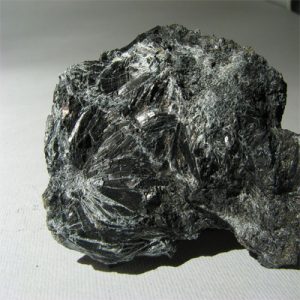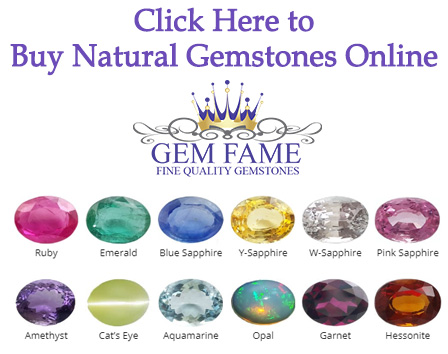Ludwigite is a relatively rare magnesium iron borate mineral that is rarely mentioned in the gem trade. Although there are opaque black, metallic faceted Ludwigite gems available as curiosities for collectors of the unusual, the most common occurance of Ludwigite as a gem is as dark, olive-green Ludwigite inclusions in Peridot from Pakistan. These gems can be so densely included with the fine, fibrous, dark green Ludwigite needles that a normally bright green Peridot can be very dark green.
There are numerous localities for finding Ludwigite, some with large amounts. From the Luliana mine, Ocna de Fier Morávicza; Vaskö), Romania. At the Brosso mine, northwest of Ivrea, Torino, Italy. From Broadford, Isle of Skye, Inverness-shire, Scotland. In the Nordmark district, Värmland, Sweden. In Russia, at the Tazheran massif, west of Lake Baikal; large crystals from Titovskoye, Sakha. In the Gole Gohar iron deposit, Bafq district, Iran. In the USA, from the Pomeroy mine, Anaconda, Deer Lodge County, and at Philipsburg, Granite County, Montana; from the Crestmore quarry, Riverside County, California; at the Mountain Lake mine, Big Cottonwood district, Salt Lake County, Utah. In Canada, in the York River tactite zone, Bancroft, Ontario; from the Cross quarry, near Wakefield, Quebec. In the Hol Kol Au–Cu mine, about 75 km southeast of Pyongyang, Suan County, North Korea.
| Category: | Borate mineral |
| Chemical Formula: | Mg2Fe3+BO5 |
| Magnesium Iron Borate | |
| Molecular Weight: | 195.26 gm |
| Composition: | Magnesium | 24.89 % | Mg | 41.28 % | MgO |
| Iron | 28.60 % | Fe | 40.89 % | Fe2O3 | |
| Boron | 5.54 % | B | 17.83 % | B2O3 | |
| Oxygen | 40.97 % | O | |||
| 100.00 % | 100.00 % | = TOTAL OXIDE |
| Crystallography: | Orthorhombic – Dipyramidal |
| Crystal Habit: | Crystals are unterminated, fibrous, curved, to 20 cm; commonly in fanlike to felted aggregates. |
| Twinning: | None |
| Cleavage: | None observed |
| Fracture: | Fibrous |
| Tenacity: | Tough |
| Moh’s Hardness: | 5.0 – 5.5 |
| Density: | 3.80 (g/cm3) |
| Luminescence: | None |
| Radioactivity: | Not Radioactive |
| Other: | • Weakly ferromagnetic, probable.
• Slowly soluble in acids. Alters to Limonite. |
| Color: | Dark Olive-Green to Pitch Black |
| Transparency: | Opaque to Sub-Translucent. Translucent only in thin fragments and rims of crystals. |
| Luster: | Silky, Metallic |
| Refractive Index: | 1.83 – 2.03 Biaxial ( + ) |
| Birefringence: | 0.1400 – 0.1800 |
| Dispersion: | Extreme; r >> v |
| Pleochroism: | X = Y = dark green; Z = dark reddish brown |
| Anisotrophism: | Strong; yellowish brown to bluish violet gray |
| Other: | Bireflectance: Pinkish gray to dark greenish gray |


